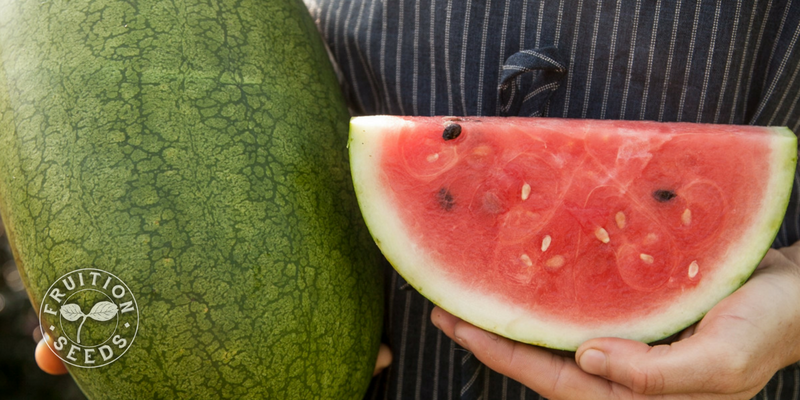In our gardens and in our lives, timing is everything.
And Friends, it is so easy to start seeds way too early.
It’s counter-intuitive, but plants started too early often get stressed (too little light, too few nutrients) and thus produce later and less abundantly than younger plants that are less stressed.
So hold your horses, dear Friends!
My dear friend Sal and I created a planting calendar for you to help nail your timing this season… here it is for Zones 4 through 7 to keep you on track:
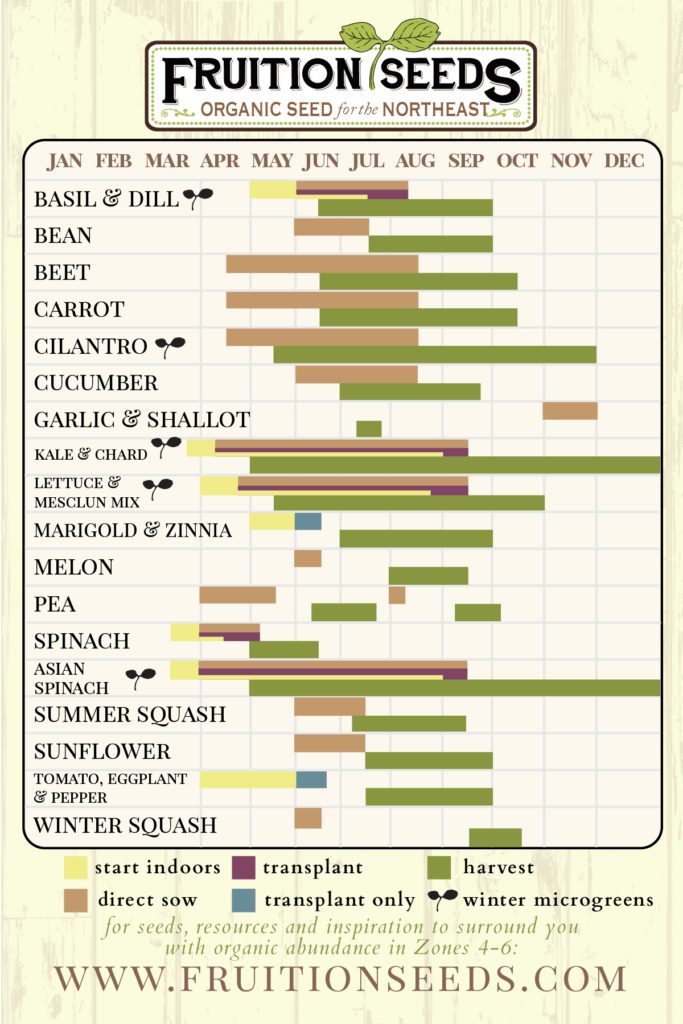
Each online order this season will receive one of our planting calendars, as well : )
Tip: If you’re in Zone 8 or warmer, simply add two weeks on either end of the growing season for each Zone!
In addition to the Planting Calendar, you’ll find Fruition’s Direct Seeding Chart as well as the Transplant Chart in Fruition’s Growing Library here! And all three can be found in both spiral bound books, Rise & Shine: Starting Seeds With Ease and the Across the Seasons Calendar.
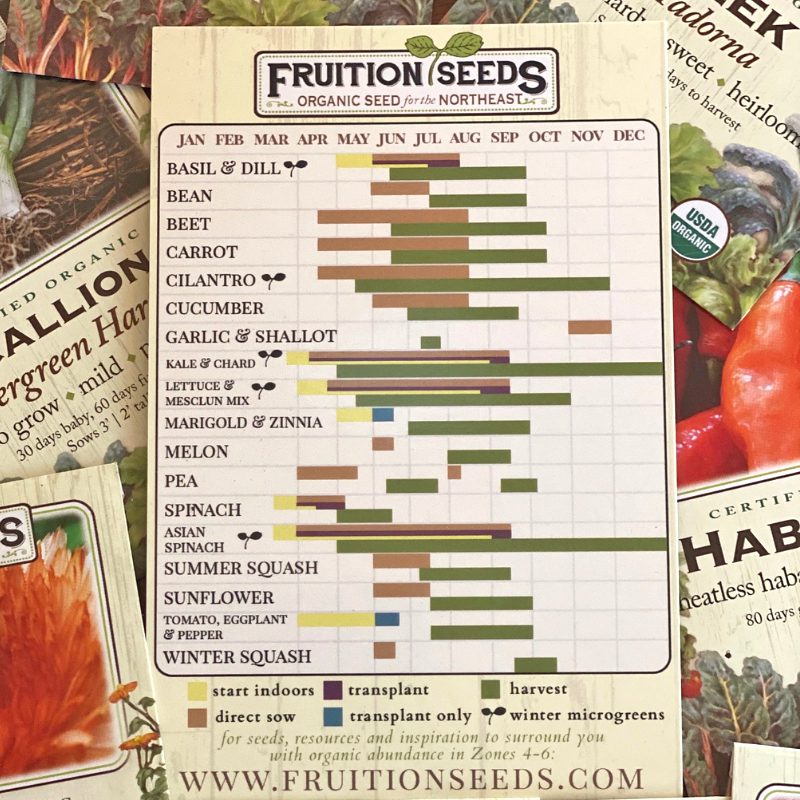
Receive Fruition's free...
Garden Planning Charts
To help surround you with abundance, we'd love to share Fruition's:
planting calendar
direct sow chart & transplant chart
as well as our crop notes chart!
And Friends, each of our packets are mini-encyclopedias of information, as well. In addition to longer growing instructions, there is a quick reference tab with some pretty handy advice to have at arm’s length. You’ll find plant spacing after thinning, whether to direct sow or transplant (or both), days to germination, when to sow and seeding depth:
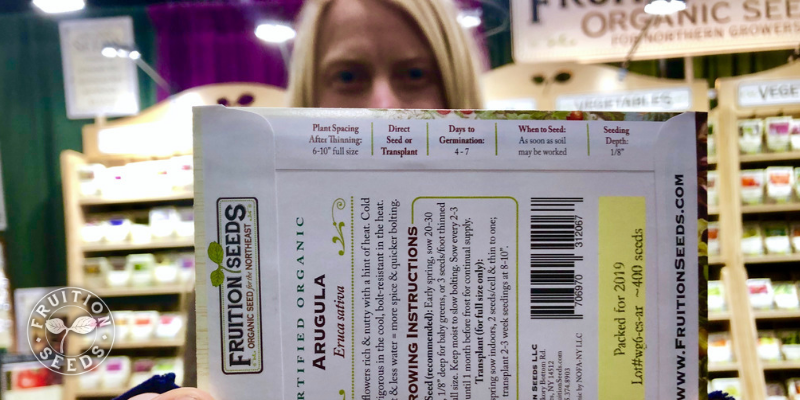
Of Time and Tools
The quality of your seed-starting set-up profoundly determines when you sow your seeds, as well.
For example, if you have full-spectrum LED grow lights, heat mats, plenty of potting mix and containers as well as time to invest in potting up your transplants, you can start virtually any time you like. Our planting calendar is still relevant, but you have much more capacity to grow healthy transplants beyond the classic season and I hope you do!If you don’t have the tools or the time, you’ll only stress your plants (as well as yourself!) starting seeds starting early. (It’s sometimes difficult to be fully honest with ourselves, in our gardens and in life. Err on the side of you have less-quality conditions than you think.) If you have none of the tools, I recommend only growing from seed those plants that need up to 4 weeks inside: lettuce, zinnias, basil and other quick-growing annuals. Plants that need more than 5 weeks, like your tomatoes, peppers, eggplant and lavender, will likely be stressed in your less-than-optimum conditions. I recommend simply not growing these plants at all if this sounds like you: Spending a few dollars on plants rather than seeds will surround you much more abundance in the coming months!
You’ll find all these considerations and so much more, including the planting calendar, direct sowing as well as transplanting charts, in Rise and Shine: Starting Seeds with Ease, Fruition’s 50-page book. Adam from Bridgehampton, New York wrote me to share, “Heaps of info right at your fingertips. After twenty years of gardening, I can’t recall how many times I turned to this for info! Another Petra homerun.”
May Rise & Shine surround you with abundance, too!
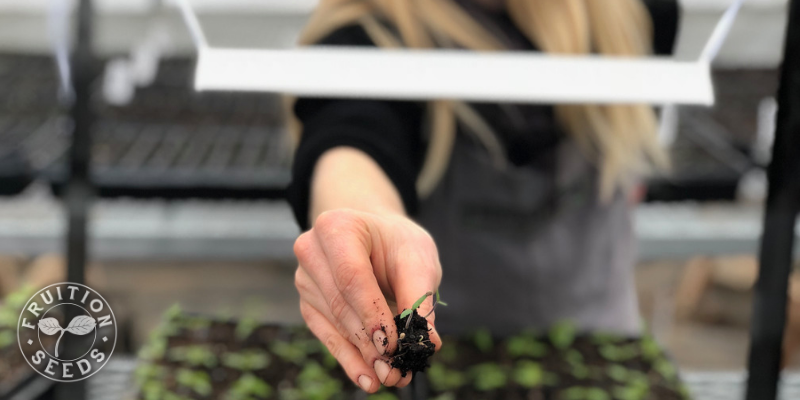
Let There Be Light
Let’s talk about light and get ready to cringe: Here in the Northeast, even sunny south-facing windows are not enough light for your tomatoes, peppers and eggplants. Or any other vegetable! But those with lengthy indoor transplant lives will suffer the most. Again, be honest with yourself and then assume that you’re still over-estimating your capacity. Stick to growing only plants that require 4 weeks indoors or less so lack of light won’t dramatically decrease your abundance.
If I Planted Early, What Next?!
Don’t sweat it, but do be prepared to pot up your growing transplants as often as possible. Your goal is to inspire your plant’s constant growth, reducing its stress in any way possible. The two greatest limiting factors for your seedlings are lacking light and lacking nutrients.
But Wait, There’s More…!
Here are the 7 Essentials of Seed Starting and 5 Common Mistakes to Avoid, an infographic Sal and I made in 2018, sharing more insight on seed starting with you!
Starting your own seeds is so rewarding, though far from foolproof. For the deep dive of seed starting, we’ve created Fruition’s Seed Starting Academy to quickly increase your skills and confidence to surround you with abundance.
Sow Seeds & Sing Songs,

and the Many Beings of Fruition
ps
Thank goodness there are seeds that despise being transplanted, like our August Ambrosia watermelon, that thrive most when planted directly in the ground!

